St John of the Cross
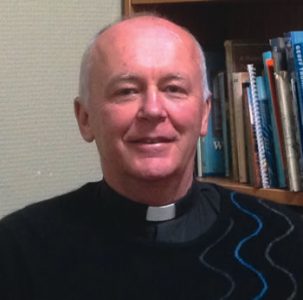
Fr Carl Telford sm
The Dark Night of the Soul
Part 5 of 5
This is the fourth major work of St John, even though scholars say it is a continuation and completion of his earlier work, the Ascent of Mount Carmel. In fact, both comment on the same poem, but take different angles.
The Dark Night is concerned with a deeper purification than the Ascent. It explains the passive night of the senses and the passive night of the spirit. These stages are called the passive nights because they are received or accepted from the hand of God. God must intervene.
In the active nights we are denying ourselves and purifying ourselves. But these active nights, our work, are not sufficient to lead us to this new knowing of God. Something more is required. We need more grace and the direct action of God. In the time of darkness, we must not forget the goal and freedom of unspeakable joy of encountering God himself. Hence, St John’s analogy of a weaning like a mother moving the child onto solids. We grow up.
The Dark Night is made up of two books. The first is about the passive Night of the Senses, the second about the passive Night of the Spirit. The key idea is that God is changing how we pray. Instead of meditation, we are given the gift of contemplation, a general loving communion with God. Whatever is not of God is burnt away. We are emptied to be filled with God.
Book One:
Dark Night of the Senses
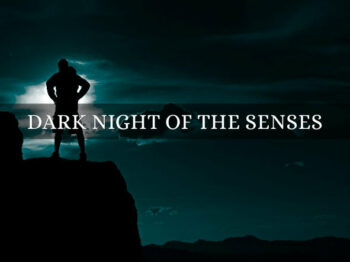 Chapters1-7 contain much wise advice on the way for beginners in the spiritual life to deal with the seven capital sins. It might be said that these are some of the most helpful pages St John ever wrote, worth reading and re-reading, especially for spiritual directors. He begins with spiritual pride, then deals with spiritual avarice, spiritual anger, spiritual gluttony, spiritual envy and sloth.
Chapters1-7 contain much wise advice on the way for beginners in the spiritual life to deal with the seven capital sins. It might be said that these are some of the most helpful pages St John ever wrote, worth reading and re-reading, especially for spiritual directors. He begins with spiritual pride, then deals with spiritual avarice, spiritual anger, spiritual gluttony, spiritual envy and sloth.
Chapters 8, 9 and 10 contain valuable advice on how to proceed in this stage of the deeper prayer of contemplation. St John sets out how to tell the signs of God’s action and also what comes from our imperfections, frailty and luke-warmness.
In Chapter 9 he gives the three signs of the call to contemplation “a secret and peaceful inflowing of God” and the putting aside of meditation.
Chapter 10 gives suggestions on how this new prayer of contemplation works. The senses remain dry and empty but the spirit is tasting God. As well, the infused virtues, especially charity towards others, are growing.
Chapter 13 is one of the best chapters. It describes the freedom and blessings experienced after the purification. The soul is moving in tranquility. Chapter 14 describes the trials encountered.
Book Two:
Dark Night of the Spirit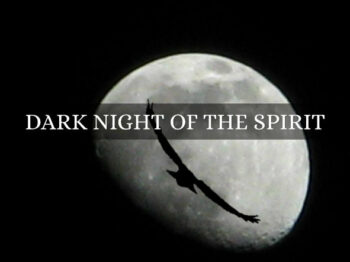
Now comes a more searching and deeper purification. This inflowing of God into the soul is experienced as very painful. The soul is haunted by the question “why is the good God coming into my imperfect and miserable soul?” There is a real sense of desolation and abandonment. No words of comfort console.
This sense of dereliction is a small share in Christ’s sense of dereliction during his passion. Yet, in this most painful time, the person knows God is acting. God is purging the soul to transform it. St John uses his famous analogy of the log of wood in the fire being cleansed and becoming on fire.
It is, of course, the fire of love from God’s action within the soul. This new type of prayer, without images or concepts, is obscure and hidden. It is God-centred and received as a gift. It is a new sense of God’s presence.
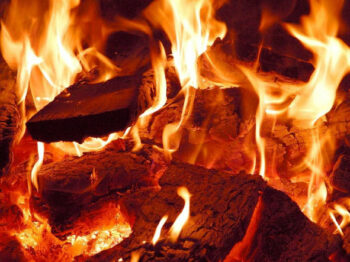 In chapters 14 to 24, St John deals with this new life in God. He explains how safe the soul feels in travelling now by faith, not bound to the senses. It is free from the incessant bondage of wrongful desires and appetites. Faith is likened to a white garment, a protection against the devil and a sign of God’s action. Hope is a green garment which raises us from worldly concerns and relies on God alone. The red garment of charity protects us from the flesh or excessive self-love as the soul is now centred on God alone.
In chapters 14 to 24, St John deals with this new life in God. He explains how safe the soul feels in travelling now by faith, not bound to the senses. It is free from the incessant bondage of wrongful desires and appetites. Faith is likened to a white garment, a protection against the devil and a sign of God’s action. Hope is a green garment which raises us from worldly concerns and relies on God alone. The red garment of charity protects us from the flesh or excessive self-love as the soul is now centred on God alone.
St John writes: “love alone is what guides and moves the soul and makes it soar to God in an unknown way along the road of solitude.”
Chapters 19 and 20 explain the ten steps of divine love, which is a portrait of a true humble disciple.
Then, suddenly, in Chapter 25, St John finishes writing for some unknown reason. Why?
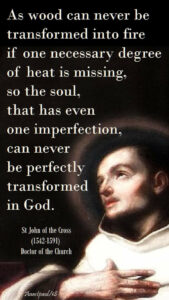 All we know is that what we have is a spiritual masterpiece for all time. It is very little known, but perhaps these testing times may be the impetus for people to turn to its inspired teaching and put aside other less nourishing teaching. This is not the time for spiritual canapés, but for solid food. May we all enjoy the reality in heaven, Amen.
All we know is that what we have is a spiritual masterpiece for all time. It is very little known, but perhaps these testing times may be the impetus for people to turn to its inspired teaching and put aside other less nourishing teaching. This is not the time for spiritual canapés, but for solid food. May we all enjoy the reality in heaven, Amen.
St John of the Cross, pray for us.
 Entries(RSS)
Entries(RSS)